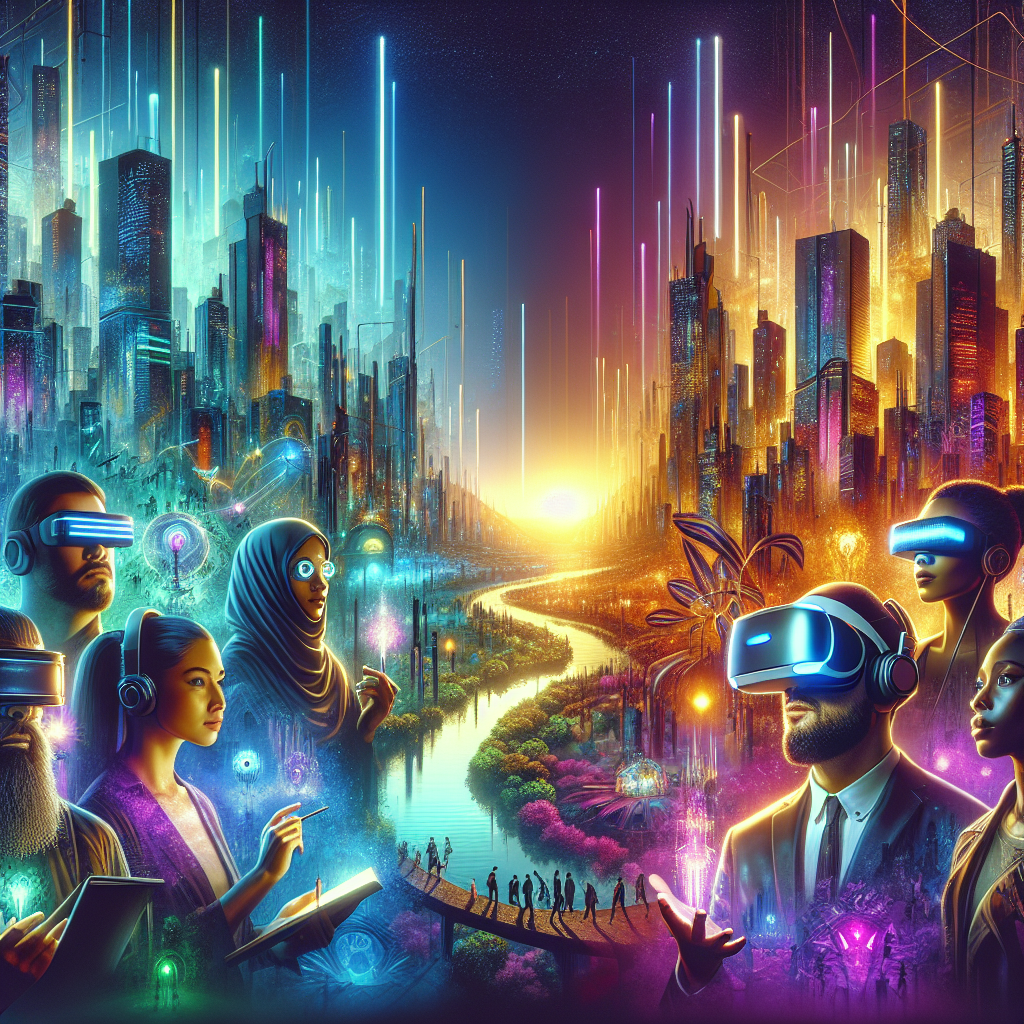How to Advertise a Virtual Reality Experience: Your Ultimate Guide
Virtual Reality (VR) is rapidly transforming the way we experience digital content, offering immersive experiences that engage users like never before. Whether you’re a developer, a marketer, or a business owner, understanding how to effectively advertise a VR experience is crucial in today’s tech-driven world. In this guide, we’ll explore strategies to make your VR offering stand out in a competitive market. 🌟
Table of Contents
1. Introduction to VR Advertising
2. Understanding Your Target Audience
3. Crafting a Compelling Story
4. Utilizing Social Media Platforms
5. Collaborating with Influencers
6. Creating Interactive Content
7. Optimizing for SEO
8. Conclusion
9. FAQs

Introduction to VR Advertising
VR is no longer just a futuristic concept—it’s here, and it’s reshaping how we consume entertainment, education, and even shopping experiences. However, advertising a VR experience requires a unique approach that captures the immersive nature of the technology. Let’s dive into the essentials of VR advertising!
Understanding Your Target Audience
Before launching any marketing campaign, it’s essential to understand who you’re targeting. VR enthusiasts, tech-savvy individuals, and gamers are often the primary audience, but don’t forget about educators, trainers, and creatives who are increasingly interested in VR.
Tip: Conduct market research to identify specific demographics, interests, and behaviors of potential users. This insight will guide your advertising strategy and ensure your message resonates with the right people. 🎯
Crafting a Compelling Story
Every great VR experience tells a story, and your advertising should too. Focus on the narrative you want to convey—whether it’s a thrilling adventure, a relaxing journey, or an educational exploration.
Use visuals and storytelling techniques to paint a vivid picture of what users can expect. Highlight unique features and benefits that set your VR experience apart. Remember, people connect with stories, not just products.
Utilizing Social Media Platforms
Social media is a powerful tool for reaching a broad audience. Platforms like Instagram, Facebook, and TikTok are perfect for sharing short, engaging video clips that showcase your VR content.
Tip: Utilize hashtags and location tags to increase visibility. Engage with your audience by responding to comments and encouraging users to share their experiences. Make use of paid advertising options to target specific demographics more effectively.
Collaborating with Influencers
Influencers have the power to sway their followers’ opinions, making them valuable partners in promoting your VR experience. Look for influencers who align with your brand and have a genuine interest in technology or gaming.
Offer them a free trial or exclusive access to your VR experience in exchange for a review or shoutout. Their authentic feedback can lend credibility to your offering and reach a wider audience. 🤝
Creating Interactive Content
Interactive content is key to demonstrating the immersive nature of VR. Consider creating 360-degree videos, virtual tours, or teaser clips that provide a sneak peek into your experience.
Interactive content not only showcases your product but also encourages users to engage with your brand. The more users can interact with your content, the more likely they are to take the next step and try your VR experience.
Optimizing for SEO
While VR is a visual medium, text-based content remains crucial for visibility online. Use SEO techniques to ensure your website and content rank highly in search engine results.
Tip: Incorporate keywords related to VR, such as “virtual reality experience,” “immersive technology,” and “VR gaming,” throughout your content. Optimize your website’s meta tags, descriptions, and alt text for images to improve searchability.
Conclusion
Advertising a VR experience is all about capturing the imagination and curiosity of potential users. By understanding your audience, crafting compelling stories, and utilizing modern marketing tools, you can effectively promote your VR offering and stand out in the digital landscape. Remember, the goal is to invite users into a new world—make sure it’s one they won’t want to leave! 🌐
FAQs
Q1: What platforms are best for advertising VR experiences?
A1: Social media platforms like Instagram, Facebook, and TikTok are ideal due to their visual nature. Additionally, YouTube is excellent for longer video content.
Q2: How important is influencer marketing for VR?
A2: Influencer marketing can be highly effective as it leverages the trust and reach of established personalities to introduce your VR experience to new audiences.
Q3: What are some cost-effective ways to advertise a VR experience?
A3: Utilize organic social media strategies, collaborate with micro-influencers, and create engaging content that encourages shares and word-of-mouth promotion.
By implementing these strategies, you’ll be well on your way to successfully advertising your virtual reality experience. Happy marketing! 🚀
